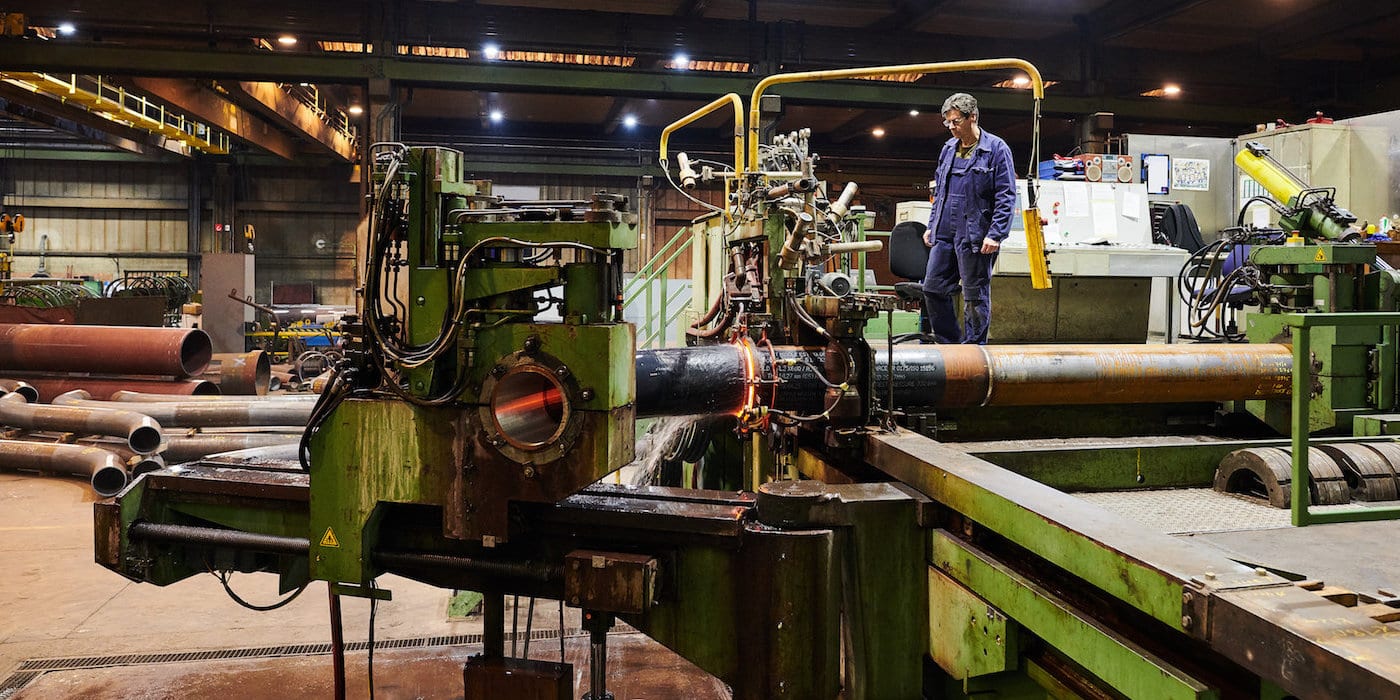
Collaborating more closely with our suppliers
FEATURE – This Dutch company decided to start its lean journey by involving its suppliers in the improvement work. We hear from both customer and supplier.
Words: Yi An Yung, Senior Buyer, N.V. Nederlandse Gasunie
As part of the Lean Professional Program course I attended at the Lean Management Instituut, I was asked to complete a lean project in our business, N.V. Nederlandse Gasunie, a Dutch gas infrastructure and transport company. I decided to take a rather unorthodox approach, and to run my project in partnership with one of our suppliers.
Engie Fabricom has supplied induction bends to Gasunie for many years. Up until 2016, they enjoyed 90-95% rate of on-time delivery. Starting in 2014, however, oil and gas prices decreased dramatically and, as a consequence, so did the number of investments in oil and gas projects. The drop in activity led to cost-cutting measures at all major suppliers of the industry. In turn, these sometimes led to longer delivery times and a drop in on-time delivery. On a number of occasions in 2016, Engie Fabricom’s on-time delivery rate dropped below 50%. That’s why, in January 2017, we thought that running a lean project together might help us to create a win-win situation for both companies.
We went to the manufacturing site and observed the whole Engie Fabricom process in detail. Drawing a value stream map and taking measurements allowed us to highlight potential next steps we could take to improve the reliability of deliveries. It took half a year to analyze all the data we collected, but once we were done we could finally take concrete action to change things.
One of the most important things our analysis revealed was the fact Gasunie would send an order to Engie Fabricom every week, with a delivery time of 15 weeks. Because they could produce in 10 weeks, they typically waited a month before starting. Unfortunately, this meant that at the first problem, the whole order got delayed. This came out of our analysis, and we discussed how to change it. We eventually decided to send them an order once a month, instead of once a week. That’s one of the actions we took, which was important to break the initial resistance we were encountering. Another thing we did was reviewing the inspection documents in use, which over the years had become huge documents! We made them slimmer.
The project was an astounding success: between October 2017 and September 2018, we went back to 97 to 100% reliability. We celebrated the achievement with Engie Fabricom with a giant cake, and closed the project after six months of the result being sustained. It is now up to the contract managers to ensure this continues (we assess every three months, and we address any problems in order to get back to 100%).
What I find most interesting is the important role that “soft skills” – more than the tools – play in the ongoing success of this collaboration: it’s all about transparency and having a good relationship with your supplier. We have signed a joined statement and begun to focus more than ever before on building trust.
THE SUPPLIER’S POINT OF VIEW
Words: Luc Parmentier, Operations Manager, and Cees van Gent, Senior Support Engineer Bending, Engie Fabricom
After Gasunie and Engie Fabricom met a few times, a statement document was drawn up containing the rules of conduct that were mutually agreed upon to try and reduce delivery times. KPIs were established, communication lines created, and the project initiated. We were almost completely new to lean thinking, but we quickly learned a lot.
During our first project meeting, our team learned some of the fundamental of lean thinking. We talked about value stream mapping, the idea to aligning production with customer demand, spend analysis and bottlenecks measurement. The aim of all this was to expose problems in the process, in order to learn where to go and take action.
The second meeting saw teams from Gasunie and Fabricom create a provisional value stream map, putting the entire process under a magnifying glass. We wanted to break it down into as much detail as we could, something which turned out to be a rather complex exercise. We even realized that some of the terms used in our processes weren’t entirely clear to the Gasunie team. So, we created a video about our production processes and offered Gasunie people an extensive tour of our factory, explaining to them all of our production steps. This brought much-needed clarity.
We then proceeded to making all steps as transparent as we could and reorganizing them in the right order. This was a great way to boost collaboration between our two companies and to get to learn about each other’s processes. In our case, the process entailed a dangerously high number of steps that were likely generating a lot of waiting. Indeed, an analysis of a few orders confirmed that valuable time was being lost at various steps in the process.
We then drafted an action plan and set a number of internal guidelines on the maximum waiting time allowed between process steps. In addition, we reached an agreement with Gasunie to change their order frequency to once a month. At the same time, we reduced the amount of documents we needed to perform quality checks by 50%. We were not always 100% clear on the lean process as it unfolded, but we let Gasunie take the lead and we were thrilled to see it pay off. Communication between the two companies, and internally to Fabricom, has become more transparent and frequent. Additionally, Gasunie and Fabricom now understand each other’s cultures and work methods better. More importantly, we have been able to re-establish our previous rate of on-time delivery, thus regaining our status as a reliable supplier. We are very grateful to Gasunie for everything we have learned.
THE AUTHOR



Read more


FEATURE – How an amusement park in Norway is using lean visual management to support actors during their busy schedule and to give visitors an experience they will never forget.


FEATURE – The Sourcing team at insurance company SulAmérica tells us about how they were able to transform the process in their department in order to become more efficient in dealing with their workload.


FEATURE – What a Brazilian bank has learned from its first few steps in adopting hoshin kanri through structured problem solving and people development.


FEATURE – A real understanding of Lean Thinking can only stem from an exploration of its tacit aspects, not just its most explicit, easy-to-grasp elements.

